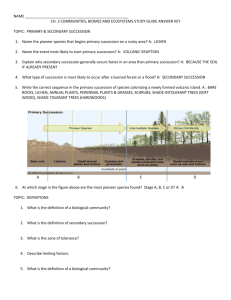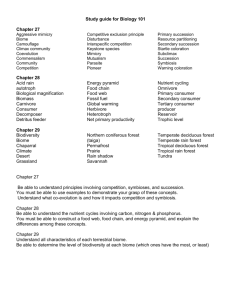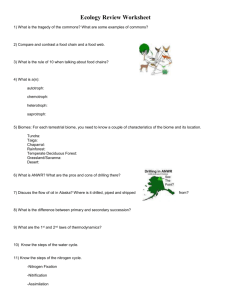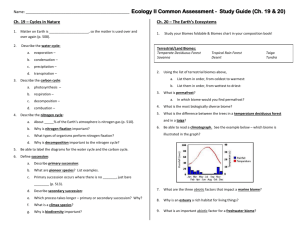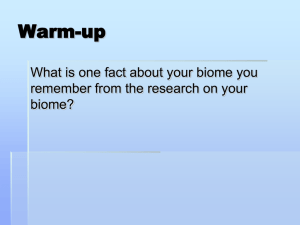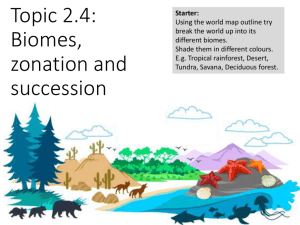Ch. 3 Study guide
advertisement
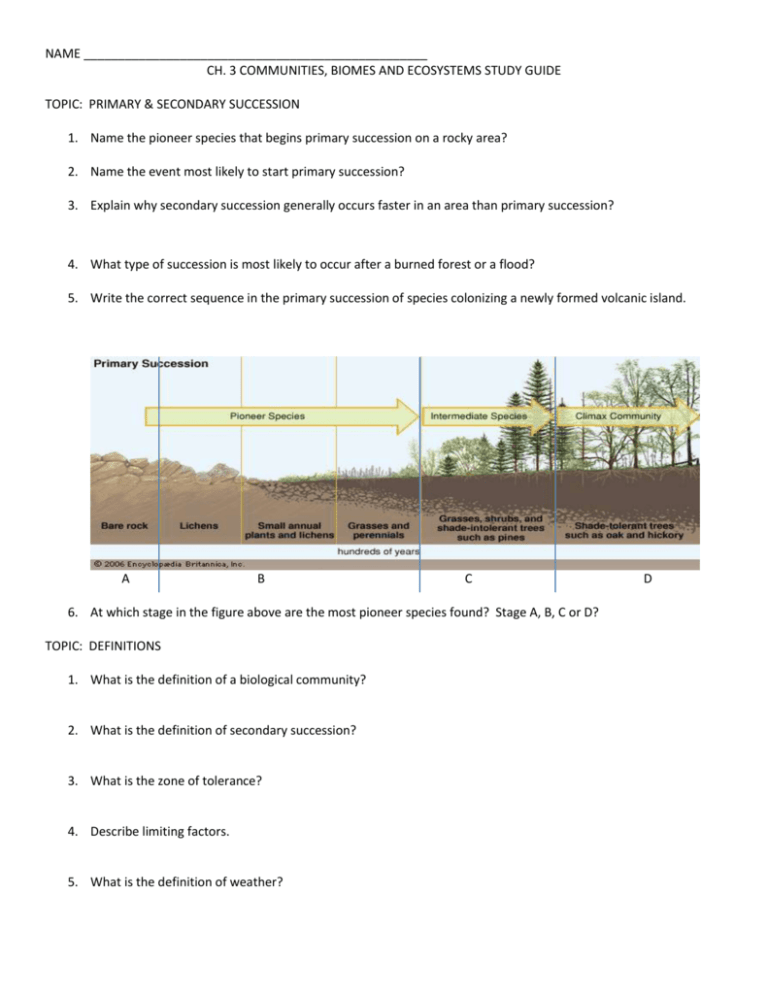
NAME __________________________________________________ CH. 3 COMMUNITIES, BIOMES AND ECOSYSTEMS STUDY GUIDE TOPIC: PRIMARY & SECONDARY SUCCESSION 1. Name the pioneer species that begins primary succession on a rocky area? 2. Name the event most likely to start primary succession? 3. Explain why secondary succession generally occurs faster in an area than primary succession? 4. What type of succession is most likely to occur after a burned forest or a flood? 5. Write the correct sequence in the primary succession of species colonizing a newly formed volcanic island. A B C 6. At which stage in the figure above are the most pioneer species found? Stage A, B, C or D? TOPIC: DEFINITIONS 1. What is the definition of a biological community? 2. What is the definition of secondary succession? 3. What is the zone of tolerance? 4. Describe limiting factors. 5. What is the definition of weather? D TOPIC: BIOMES –USE THE FOLLOWING GRAPH TO ANSWER SOME OF THE BIOME QUESTIONS 1. What determines whether a zone is photic or aphotic? 2. Name the terrestrial biome that has the greatest biodiversity. 3. Describe the unique properties for the tundra biome. 4. The precipitation on a tropical savanna increased from 100 to 200 centimeters per year but temperature remained the same, what biome would replace the savanna? 5. Name the biome that has a forest with broad-leaf evergreen trees, mosses, and orchids, 20-25°C temperatures, and where the ˃300 cm of rainfall per year. 6. State the reason why trees cannot take root in the tundra. 7. Describe a boreal forest. 8. Describe a desert. 9. Describe a temperate forest. 10. Describe a tropical savanna. 11. Describe a tropical rain forest. 12. Look at the graph above and identify the biome that gets an average precipitation of ˂100 cm. of precipitation and a temperature span of -5° - 30°C. 13. Explain why the temperate grassland biomes have been destroyed by human activities and name those activities. 14. State the optimal range of tolerance for the brook trout? 15. State the range of tolerance where the brook trout are the least active? TOPIC: CLIMATE & WEATHER 1. What single feature is primarily responsible for the variation of climate in different parts of the world? 2. The climates of Earth’s tropical, temperate, and polar zones are primarily determined by what? 3. What is the definition of weather? 4. Identify several factors that determine the climate of a region? 5. Compare and contrast weather and climate. 6. Explain why there is a climatic difference between the cities of Fairbanks, Alaska and Honolulu, Hawaii.



